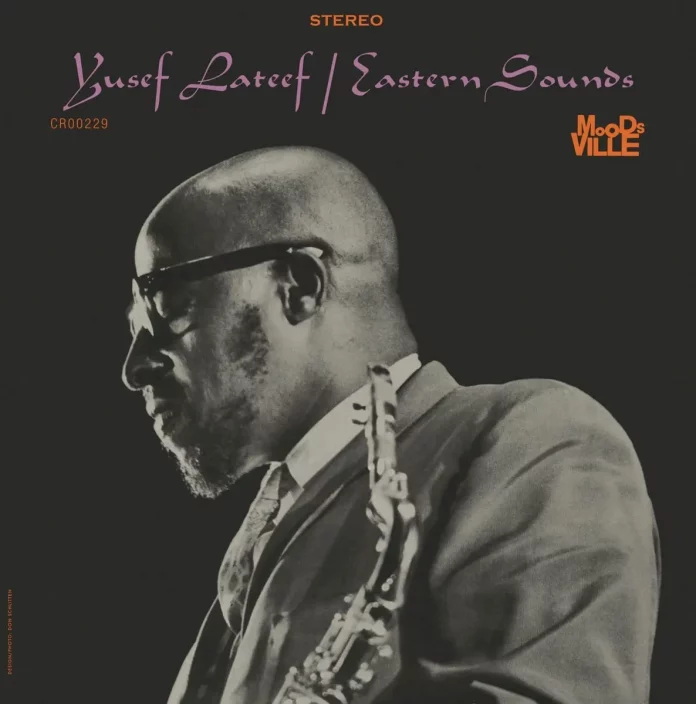Yusef Lateef, born William Emanuel Huddleston in Chattanooga, Tennessee on 9 October 1920 first gained prominence when invited to join Dizzy Gillespie’s orchestra in 1949. He later joined Cannonball Adderley and between 1962 and 1964 played on The Cannonball Adderley Sextet In New York (Riverside, 1962), Cannonball In Europe! (Capitol, 1962), Jazz Workshop Revisited (Riverside, 1962) and Nippon Soul (Riverside, 1964). During his studies in composition and flute at Wayne State University (Detroit) he converted to Islam as a member of the Ahmadiyya Muslim Community and changed his name to Yusef Lateef.
He made the pilgrimage to Mecca twice. He was naturally drawn towards the East and its music and this manifested itself from the beginning of his career on his debut album Jazz For The Thinker (Savoy, 1957) where he played a North African double pipe single-reed instrument, the arghul.
Astonishingly, Eastern Sounds was Lateef’s 16th album in the space of only five years. Here his Eastern proclivities manifest themselves fully and not just in the title. Opening with The Plum Blossom, Lateef employs a xun (an ancient globular flute), to evince a wistful sound, sparsely accompanied by hand drum and piano. On Blues For The Orient Lateef demonstrates his innovative status in jazz by using the oboe (a relative rarity in jazz). The instrument curiously lends itself very well to the Eastern theme. By the third track, the modal Ching Miau, it’s clear that Lateef has a major record on his hands.
Even on standards like Jimmy McHugh’s Don’t Blame Me, Lateef’s tenor is masterly, languidly coaxing out the tune. The other two remaining non-originals, Alex North’s Love Theme From Spartacus and Alfred Newman’s Love Theme From The Robe, are imbued with trademark Lateef signatures – the former with serpentine oboe and the latter with delicate flute. Snafu sees Lateef channelling Sonny Rollins’ punchy style on tenor, in total contrast to his tenor on the following track, the slow ballad Purple Flower. The Eastern feel returns on the meditative The Three Faces Of Balaal with Lateef again on flute.
Discography
The Plum Blossom; Blues For The Orient; Ching Miau; Don’t Blame Me; Love Theme From Spartacus; Snafu; Purple Flower; Love Theme From The Robe; Three Faces Of Balal (37.67)
Lateef (ts, o, f, xun); Barry Harris (p); Ernie Farrow (b, rabaab); Lex Humphries (d). New Jersey, 5 September, 1961.
Original Jazz Classics CR00615
















